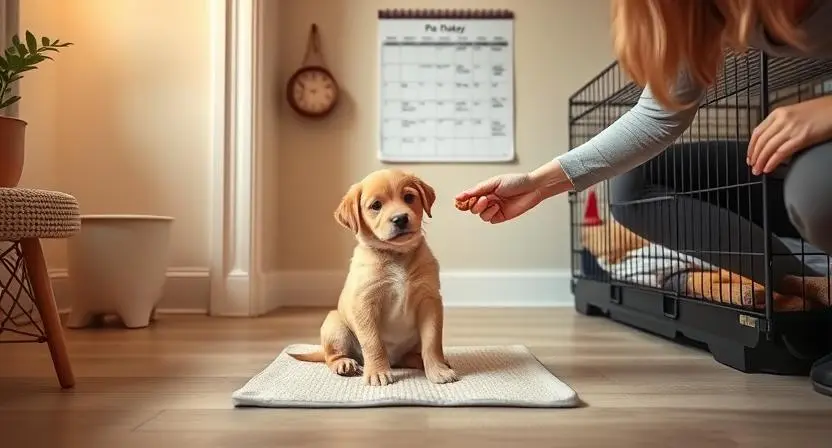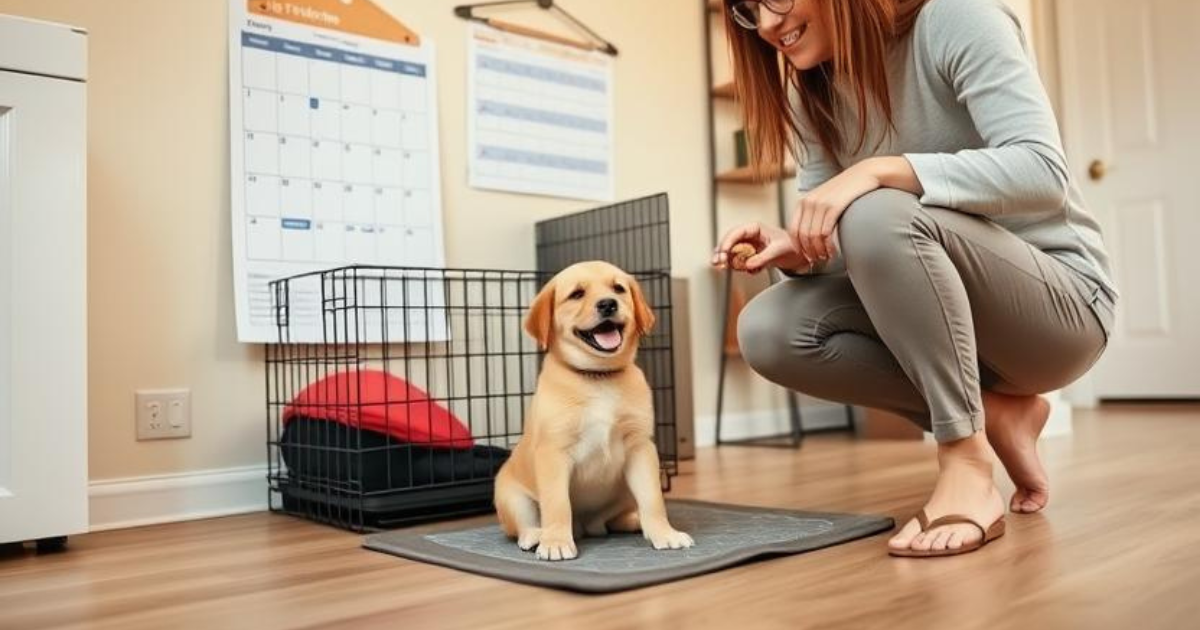How to House Train a Dog: The Ultimate Guide That Guarantees Success
The Empathetic Reality Check
Are you tired of finding unpleasant surprises on your carpet every morning? Does the thought of inviting friends over fill you with anxiety because you’re not sure what they might step in? You’re not alone, and more importantly, you’re not failing as a dog owner.
Here’s the truth: Most generic advice on how to house train a dog fails because it doesn’t account for your dog’s individual needs, your living situation, or the real challenges you face daily. This comprehensive guide on how to house train a dog is different—it’s vet-reviewed, based on expert consensus, and provides practical tools that work in the real world.
Whether you’re housebreaking a dog for the first time or house training an older dog who’s set in their ways, this guide will transform your approach and deliver lasting results. Learning how to house train a dog effectively requires the right strategy, and we’ll show you exactly how to house train a dog successfully. No more guesswork, no more frustration—just a clear path to success.
Table of Contents
Understanding Your Dog’s World
Why Accidents Happen: The Science Behind the Mess
Understanding the “why” behind accidents is crucial for effective how to house train a dog strategies. When you understand these underlying factors, learning how to house train a dog becomes much more manageable:
Puppies (8-16 weeks):
- Bladder control develops gradually—puppies can typically “hold it” for one hour per month of age
- Their digestive systems are still maturing, leading to unpredictable bathroom needs
- They haven’t yet learned to associate specific locations with appropriate elimination
Adult Dogs:
- May have learned inappropriate elimination patterns from previous environments
- Could be experiencing territorial marking behaviors
- Might have underlying medical issues affecting bladder or bowel control
The Golden Rules of House Training
| Rule | Why It Matters | Real-World Application |
|---|---|---|
| Positivity | Fear-based training creates anxiety and slows progress | Celebrate every success, ignore accidents |
| Patience | Most dogs need 4-6 months to be fully reliable | Expect setbacks and stay consistent |
| Consistency | Dogs learn through repetition and routine | Same schedule, same commands, same rewards |
Essential Supplies Checklist
✅ Properly-sized crate (large enough to stand and turn around, not bigger) ✅ Enzymatic cleaner (essential for eliminating odor markers) ✅ High-value training treats (small, soft, irresistible) ✅ Leash for potty trips (maintains focus and routine) ✅ Baby gates or tethering system (for supervised freedom) ✅ Cleaning supplies (paper towels, disposable gloves)
The 5-Step Foolproof Plan
Step 1: Create a Rigid Potty Schedule
The foundation of successful housebreaking a dog is predictability. Dogs thrive on routine, and their bodies will adapt to consistent timing. This is one of the most important aspects of how to house train a dog effectively.
Sample Schedules:
8-Week-Old Puppy:
- 6:00 AM – Wake up, immediate potty trip
- 6:15 AM – Breakfast
- 6:45 AM – Post-meal potty trip
- 8:00 AM – Potty break
- 10:00 AM – Potty break
- 12:00 PM – Lunch and potty trip
- 2:00 PM – Potty break
- 4:00 PM – Potty break
- 6:00 PM – Dinner and potty trip
- 8:00 PM – Final potty break
- 10:00 PM – Last call before bed
Adult Dog Schedule:
- 7:00 AM – Morning potty and breakfast
- 12:00 PM – Midday potty break
- 5:00 PM – Post-work potty break
- 7:00 PM – Dinner and potty trip
- 10:00 PM – Final evening potty break
Step 2: Master Crate Training (The Den Method)
The crate isn’t a punishment—it’s your dog’s personal sanctuary. Dogs naturally avoid soiling their sleeping area, making crate training invaluable when learning how to house train a dog. This method is central to how to house train a dog successfully.

Crate Introduction Steps:
- Day 1-3: Feed meals in the crate with door open
- Day 4-7: Close door for 10-15 minutes while you’re home
- Day 8-14: Gradually increase duration, up to 2 hours
- Week 3+: Use for overnight and when you’re away
Pro Tip: Never use the crate as punishment. It should always be a positive, safe space.
Step 3: Supervise, Supervise, Supervise
Management prevents accidents, and prevention is easier than correction.
Supervision Strategies:
- Tethering: Attach your dog’s leash to your belt or nearby furniture
- Baby gates: Confine to easily cleaned areas
- Constant observation: Watch for pre-elimination signals (sniffing, circling, whining)
Step 4: The Perfect Potty Trip
Consistency in your potty routine accelerates learning.
The Perfect Process:
- Choose a designated spot outside and always go there first
- Use a specific command (“Go potty,” “Do your business”)
- Wait patiently (up to 5 minutes) without interaction
- Reward immediately with high-value treats and enthusiastic praise
- Allow exploration time after successful elimination
Step 5: Handle Accidents Correctly
How you respond to accidents directly impacts your dog’s learning progress and determines how quickly you’ll master how to house train a dog.
DO:
- Clean thoroughly with enzymatic cleaner
- Interrupt accidents in progress with a gentle “No” and redirect outside
- Reward if they finish outside
DON’T:
- Punish or scold after the fact
- Use ammonia-based cleaners (smell similar to urine)
- Rub their nose in accidents
Advanced Problem-Solving
House Training Regression
Why it happens:
- Medical issues (UTI, parasites, digestive problems)
- Stress from environmental changes
- Inconsistent routine
- Insufficient cleaning of previous accidents
Solutions:
- Veterinary check-up to rule out medical causes
- Return to intensive supervision and frequent potty breaks
- Re-establish consistent routine
- Deep clean all previously soiled areas
Submissive or Excitement Urination
This involuntary response requires a different approach than standard house training.
Management strategies:
- Keep greetings calm and low-key
- Have guests ignore the dog initially
- Take your dog outside before exciting activities
- Build confidence through positive training
Marking Behavior
Indoor marking solutions:
- Increase supervision and interrupt marking attempts
- Clean marked areas thoroughly
- Consider belly bands for male dogs during training
- Address territorial triggers (other pets, visitors)
Weather-Related Resistance
For rain/cold-averse dogs:
- Create covered outdoor areas
- Use doggy raincoats or boots
- Establish positive associations with outdoor time
- Gradually increase exposure to different weather conditions
Special Cases: Tailored Solutions
House Training in an Apartment
Unique challenges:
- Limited outdoor access
- Elevator wait times
- Noise considerations for neighbors
Apartment-specific strategies:
- Establish indoor “staging area” near door
- Use consistent elevator routine
- Consider indoor grass patches for emergencies
- Build relationships with neighbors who might help
House Training Senior Dogs
Considerations for older dogs:
- Potential mobility issues
- Established habits from previous homes
- Possible cognitive changes
- Medical conditions affecting bladder control
Tailored approach:
- Shorter, more frequent potty breaks
- Easier access to outdoor areas
- Veterinary evaluation for health issues
- Extra patience with habit changes
Small Breed Challenges
Small dogs often have reputations for being difficult to house train, but this usually stems from different approaches needed.
Small breed considerations:
- Smaller bladders require more frequent breaks
- Lower tolerance for weather extremes
- Different punishment sensitivity
- Tendency toward indoor elimination acceptance
Essential Tools & Resources
Downloadable Resources
📋 Printable Potty Schedules
- Customizable schedules for puppies, adult dogs, and senior dogs
- Tracking sheets for monitoring progress
- Emergency protocols for setbacks
✅ House Training Progress Checklist
- Daily tracking system
- Milestone markers
- Troubleshooting guide
📊 Infographic: Do’s and Don’ts
- Visual quick-reference guide
- Common mistakes to avoid
- Success indicators
Recommended Products
| Category | Product Type | Why It’s Essential |
|---|---|---|
| Cleaning | Enzymatic cleaner | Eliminates odor markers completely |
| Training | High-value treats | Motivates desired behavior |
| Management | Appropriately-sized crate | Prevents accidents, provides security |
| Monitoring | Potty training bells | Teaches communication |
FAQ & Final Thoughts
Frequently Asked Questions
Q: How long does it take to house train a puppy? A: Most puppies achieve basic house training in 4-6 months, with full reliability typically reached by 12-18 months. House training an older dog presents unique challenges, but the fundamentals of how to house train a dog remain the same—patience, consistency, and positive reinforcement.
Q: Can I use puppy pads? A: Puppy pads can be useful for specific situations (apartments, senior dogs, medical issues) but may confuse the house training process by teaching indoor elimination is acceptable.
Q: Why is my dog eating its poop? A: Coprophagia can result from nutritional deficiencies, boredom, stress, or learned behavior. Consult your veterinarian and ensure immediate cleanup of waste.
Q: What if my dog has accidents only at night? A: Reduce water intake 2-3 hours before bedtime, ensure final potty break is thorough, and consider overnight crate training until bladder control improves.
Q: Should I punish my dog for accidents? A: Never punish accidents after they occur. This creates fear and confusion, potentially slowing the house training process. Focus on prevention and positive reinforcement.
The Path Forward
Remember, successful how to house train a dog comes down to three fundamental principles: consistency, patience, and positive reinforcement. Every dog can learn appropriate elimination habits with the right approach and sufficient time. Mastering how to house train a dog is achievable for every pet owner willing to commit to the process.
Your journey may include setbacks, frustrations, and moments of doubt—this is completely normal. The key is maintaining your commitment to the process while adapting strategies to your dog’s individual needs.
Most importantly: Celebrate small victories, stay consistent with your routine, and remember that the bond you’re building through this process extends far beyond house training. You’re teaching communication, trust, and mutual respect that will benefit your relationship for years to come.
The investment you make in proper house training now will pay dividends in a cleaner home, reduced stress, and a more confident, well-adjusted dog. Your future self (and your carpet) will thank you.


